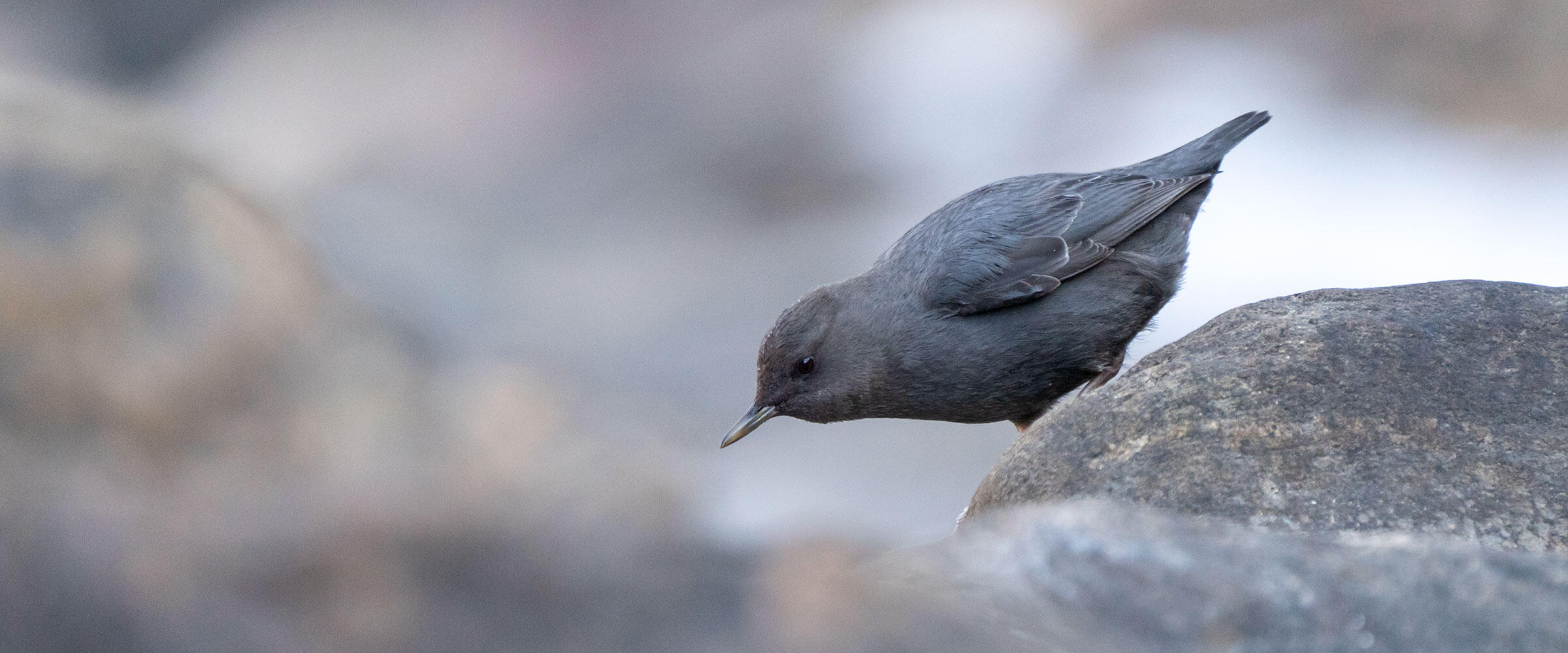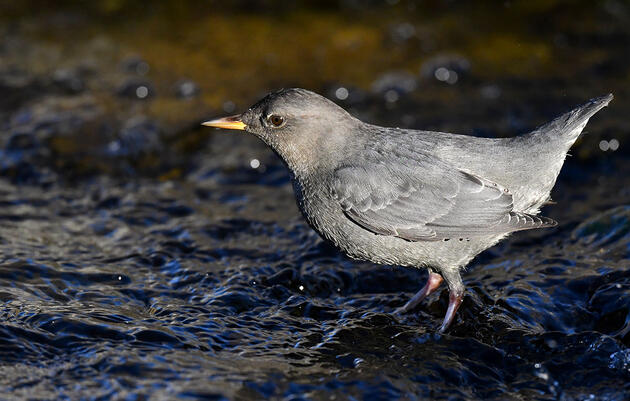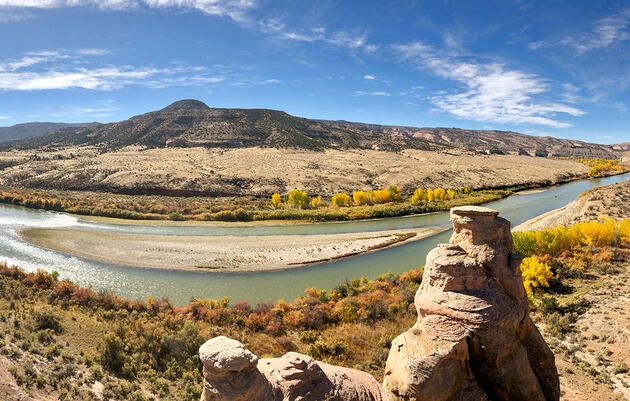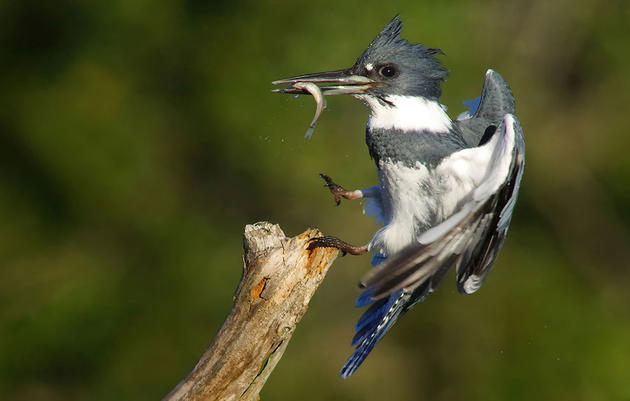What unites Coloradans and wildlife? Water. And drought. Colorado’s recent three largest wildfires’ impact on watersheds and more than five million Coloradans living in drought elevates the importance of resilient water resources—for people and birds.
Since June 2020, Governor Jared Polis has activated Colorado’s Drought Task Force, the Agricultural Impact Task Force, and the Municipal Impact Water Task Force to prepare for anticipated water challenges into 2021. The municipal portion of the emergency drought plan was activated for only the second time in history. Water security impacts people, water users, and wildlife differently, and will be a key topic for Colorado legislators.
The 2021 Colorado legislative session kicked off on January 13th and moved into recess in light of the COVID-19 pandemic. The legislature is estimated to reconvene in mid-February. While there are many competing priorities during this legislative session, resilient water resources must be high on the list.
Audubon Rockies is working with lawmakers and partners to prioritize water security for people, birds, and the healthy rivers that we all depend upon. Here are three water priority areas for Audubon Rockies in the 2021 Colorado legislative session:
Support for Natural Systems
Healthy rivers flow from healthy watersheds. Audubon supports the fiscal year 2021-22 budget request by Governor Polis for $10 million to build the state’s capacity to support forest restoration, wildfire risk mitigation, watershed restoration, and flood mitigation. The budget request will need to be approved by the legislature. This request includes $5 million for the Forest Restoration and Wildfire Risk Mitigation Grant Program at the Colorado State Forest Service, which provides wildfire recovery and risk mitigation grants to increase resiliency and ensure Colorado’s landscapes thrive and rebound. It also includes $5 million for the Watershed Restoration Grant Program at the Colorado Water Conservation Board, which provides watershed restoration and flood mitigation grants to restore stream channels and riparian areas and reduce erosion and flood hazards resulting from wildfire.
On-the-ground work for birds and river health takes adequate funding. In 2021, legislators will vote to extend the Healthy Rivers Fund tax check-off for up to 10 years. The Healthy Rivers Fund allows taxpayers to make voluntary contributions when they file their state taxes to support services and programs that grant money to on-the-ground projects that contribute to cleaner water, healthier wildlife habitat, and improved recreation throughout Colorado.
Wetlands and streams provide critical habitat for Colorado’s 500+ species of birds and—regardless of their size or frequency of flow—are connected to downstream waters and strongly influence their function. The Trump administration’s new Navigable Water Protection Rule is in effect in 49 out of 50 states. Colorado is the only state with a stay in place while courts review. If the Court of Appeals were to lift the stay, which could happen as early as next month, Colorado’s water resources (surface streams, lakes, including playas, and wetlands, including fens) would be at grave risk. The Navigable Water Protection Rule removes protections for as much as 50 percent of wetlands and stream miles now redefined as Waters of the United States (WOTUS) that federal agencies protect under their Clean Water Act authorities to block discharges of pollutants without a permit. Audubon supports the Colorado Department of Health and Environment in proactive legislation to establish a foundation for state wetland and stream protections that can safeguard our water resources from discharges of dredge and fill material associated with construction and weather future extreme federal administrative changes.
Flexible Water Management
As water supplies become more unpredictable, sharing a limited water supply—statewide—between urban, rural, agricultural, industrial, environmental, and recreational needs is the challenge at hand. Alternative transfer methods (ATMs) are flexible and temporary water sharing agreements between two water users, typically agricultural to municipal or environmental users. ATMs are an agriculture-friendly alternative to traditional “buy and dry” transactions. (A buy and dry transaction is where cities purchase working lands and accompanying water rights, change their use through water court, and permanently remove water from the land.) Colorado has taken good steps in recent years to remove legal, financial, and technical barriers to ATMs in order to support their usefulness among water users. We expect to see and support a bill this year to broaden eligibility for the program and will extend pilot projects at the same time.
Flowing Rivers
Recreational in-channel diversions (RICDs) are a mechanism for Colorado communities to hold water rights for the benefit of recreation in the river and their local economies. Currently, RICDs require a man-made feature to be constructed in the river channel that provides a new recreational experience. These structures are typically referred to as “whitewater parks” and have been built across the state. However, these parks provide a limited and static recreational experience with high costs, and can be unnecessary in a community with existing natural river recreational assets. By protecting river flows with natural or more minimal in-channel structures, a more natural hydrograph (annual river flow) can be better sustained. Protected river flow is key to supporting river health, birds, other wildlife, and local economies. Audubon is working with American Whitewater and partners to support expanded RICD flow legislation to improve flows in rivers.
The decisions we make around water impacts all of us—birds, people, and the environment. At this early stage, it is hard to predict all of the water legislation engagement opportunities for 2021. Audubon Rockies stands ready to engage on key issues to advance collaborative, sound water policy to improve water security for people and birds.









